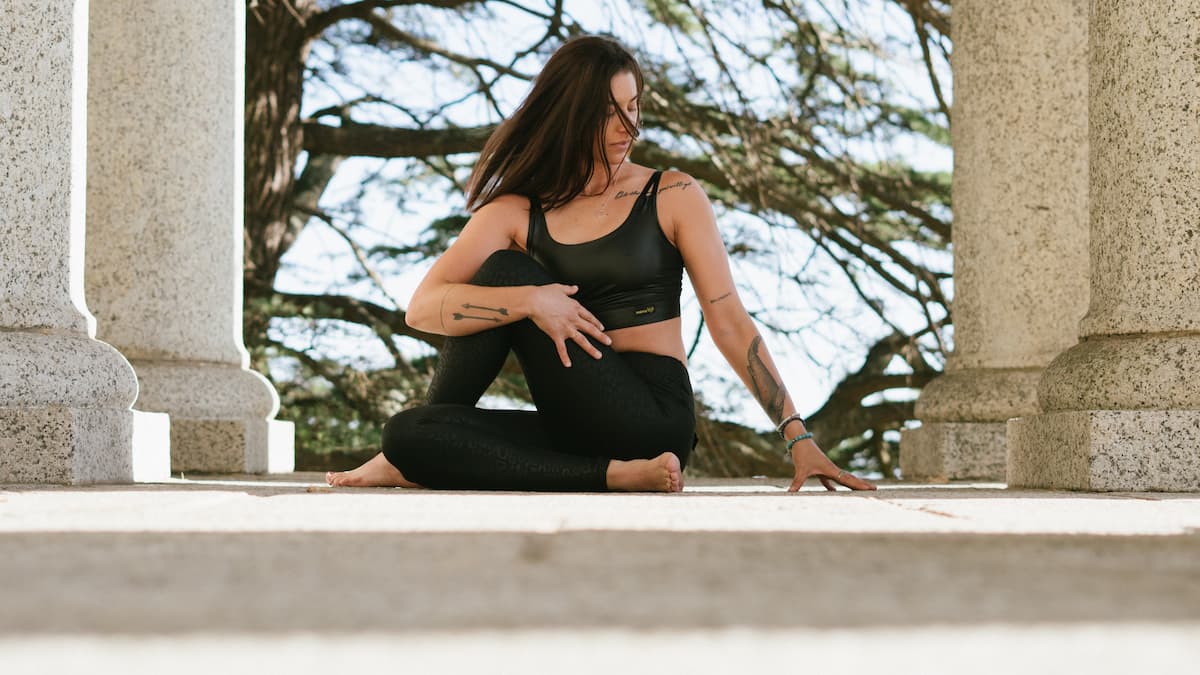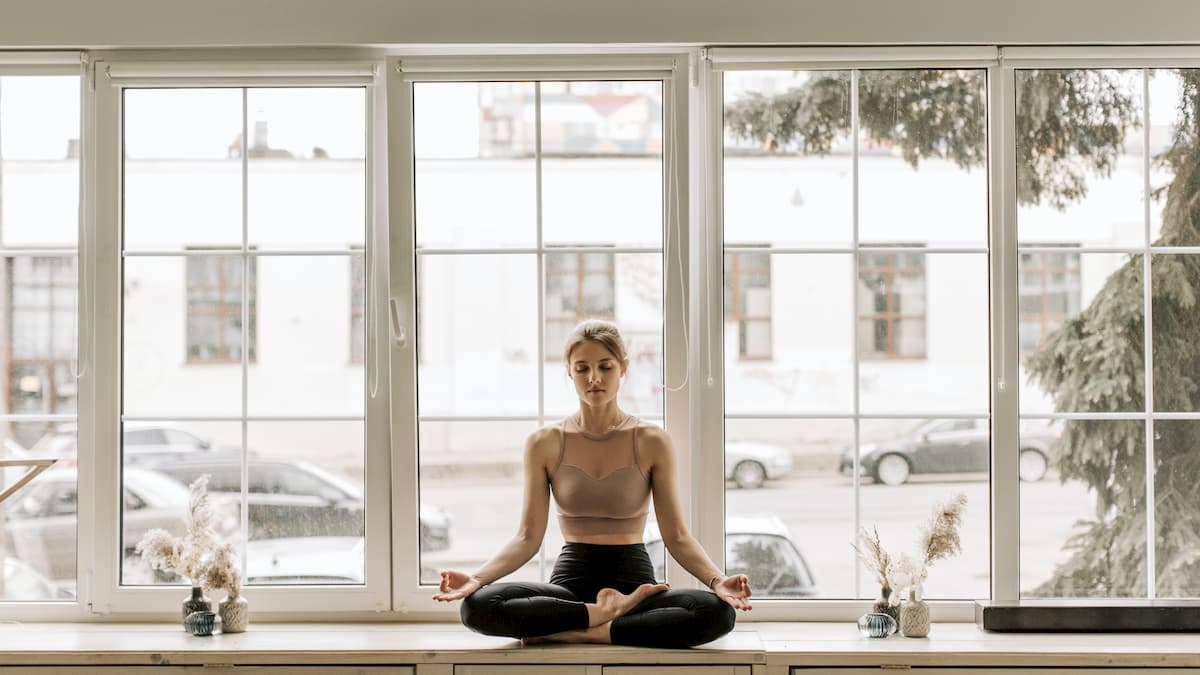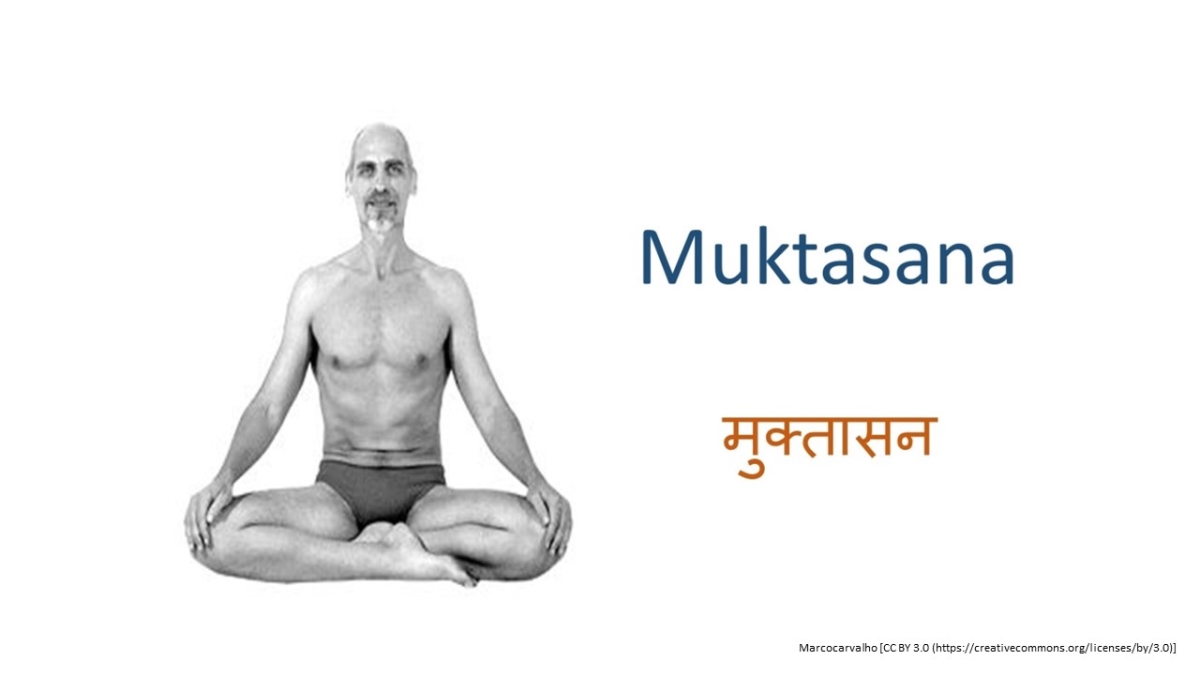Introduction
Swastikasana, (Swastik Asana) also spelled as Svastikasana, is one of the seated yoga poses used for meditation. It is easier to perform when compared to Adept Posture and Lotus Posture, yet provides the same benefits one can get from those yoga postures.
When performed, it resembles Half Lotus Pose and Adept Pose, but the leg positions are somewhere in between the two Asanas.
One of the earliest of evidence of this posture is found in the yoga text Vimanarcanakalpa of Tenth-Century CE. It means the posture was in practice well before Hatha Yoga Pradipika.
Swastikasana Information
| Pose Name | Swastikasana or Svastikasana |
| Sanskrit Name | स्वस्तिकासन |
| IAST Name | svastikāsana |
| English Name | Auspicious Pose |
| Difficulty Level | Easy |
| Origin | Ancient Indian (prior to 10th Century CE) |
| Type | Seated Yoga Posture |
Swastikasana Meaning
This Sanskrit term is the combination of two terms: Swastika and Asana. Swastika means auspicious and Asana means a seat or posture. Therefore in English, it is called the Auspicious Pose.
When performed, the position of the feet resembles the mark of Swastika. Hence it gets this name. It should be rightly called Auspicious Symbol Pose. Some people call this Prosperous Pose.
Swastikasana Practice Procedure
The practice routine of Auspicious Posture includes safety and precautions, preparatory poses, step-by-step procedures, and follow-up poses.
Safety and Precautions
The Auspicious Pose is indeed a basic-level yoga pose that is generally considered safe for most performers. However, people with specific conditions such as sciatica pain or other issues that limit normal sitting should exercise caution and avoid this posture.
While this pose offers benefits such as improved posture, focus, and relaxation, it involves sitting with crossed legs, which can increase discomfort or pain in those with sciatica or other similar conditions. The crossed-leg position may increase pressure on the sciatic nerve or increase existing issues with the lower back or hips.
For individuals with such concerns, alternative seated poses that do not involve crossing the legs, such as Thunderbolt Pose or sitting on a chair with proper support, may be more suitable and comfortable.
Preparatory Poses
The practice of following poses helps attain mastery over the Auspicious Pose.
Swastikasana Steps
Step 1
Sit on the floor with your legs stretched out.
Step 2
Fold the left leg and place the sole of the left foot against the inner side of the right thigh, so that there is a gap between the perineum and the left heel.
Step 3
Bend the right leg and place the right foot in between the calf muscles and left thigh. Similarly, on the right side, pull the toes up to correctly place the sole of the left leg in between the right thigh and calf muscles of the right leg. Now adjust the feet to be uniformly placed.
Step 4
Sit erect so that the trunk, neck, and head are in a straight line. Place the hands on the lap or in Chin Mudra or Jnana Mudra. Close the eyes. Fix your mind in between the eyebrows.
Duration
The position may be retained from five minutes to three hours according to one’s capacity.
Advanced Pose Considerations
After mastering this posture, one may go for Adept Pose or Lotus Pose wherein one can perform Bandhas. In the Auspicious Pose, one cannot perform Mula Bandha and Uddiyana Bandha correctly.
Swastikasana Benefits
Improves Posture
It improves posture because it aligns the spine, pelvis, and shoulders correctly. This seated pose tones the spine to lengthen. Also, it promotes a straighter back and reduces slouching. By engaging the core muscles and maintaining an upright position, it strengthens the muscles that support the spine. Thus, it contributes to better overall posture and spinal health.
Ideal for Meditation and Breath Control Practices
It aids meditation and breath control practices by providing a stable and comfortable seated position. It encourages an upright spine, which enhances focus during meditation. The relaxed posture aids deep and rhythmic breathing. On top of that, its calming effect on the mind promotes a conducive environment for meditation and breath awareness. Also, this posture serves as an alternative to poses like Lotus Pose and Adept Pose which are difficult to master over.
Stretches the Knees and Ankles
It gently stretches the knees and ankles by placing them in a cross-legged position. As the knees and ankles are flexed and placed outward, the inner and outer muscles of these joints experience a gentle stretch. Regular practice helps to improve pliancy in the knees and ankles, reducing stiffness and promoting mobility in these areas.
Good for the Varicose Vein
It can help alleviate symptoms of varicose veins by improving circulation and reducing pressure on the affected veins. The seated posture promotes proper blood flow throughout the body, including the legs where varicose veins commonly occur. It helps mitigate symptoms such as swelling, discomfort, and the appearance of bulging veins. On top of that, regular practice can contribute to overall vascular health and may provide relief from the symptoms of varicose veins over time.
Aids Functions of the Organs Inside Abdomen
This posture restricts the blood flow to the legs and hence more blood is directed to the abdomen region. In turn, it improves the functions of the organs inside the abdomen, notably digestion.
Helps Relieve Menstrual Discomfort
For women, this pose can help alleviate menstrual discomfort by gently stretching the pelvic region and promoting relaxation.
Swastikasana in Yoga Texts
Svastikasana in Hatha Yoga Pradipika
This text describes fifteen yoga postures. Svastikasana is the first yoga posture it describes.
Placing both the soles of the feet on the inner side of the thighs, sit straight and erect. This is Svastikasana.
– Hatha Yoga Pradipika 1.19
Svastikasana in Gheranda Samhita
This Yoga text describes 34 yoga postures. The sixth one it describes is Swastikasana Yoga Pose.
Bring the legs and thighs together and place the feet under them. Sit straight and keep the body at ease. This constitutes Auspicious Pose.
– Gheranda Samhita 2.13
Swastikasana in Siva Samhita
It describes only four yoga poses including this one. According to this yoga text, Easy Pose and Auspicious Pose are the same.
Also, the text describes how to do Swastikasana.
Place the soles of the feet completely under the thighs and keep the body straight and at ease. This is called Auspicious Pose.
In this way, one should practice the control of Prana. He will not get any diseases. He attains control over the vital air.
This yoga position is also known as Sukhasana or Easy Posture. One should keep this health-giving yoga posture a secret.
– Siva Samhita 3.95 ,3.96, and 3.97.
Swastikasana in Hatha Ratnavali
This text advocates three yoga positions for performing Pranayama: Adept Pose, Bound Lotus Pose, and Auspicious Pose. (Verse 3.83)
Arrange both the soles of the feet between the thighs and shanks. This is auspicious Pose.
– Hatha Ratnavali 3.52
Svastikasana in Hatha Tattva Kaumudi
Here comes Auspicious Posture that begets success in yoga and the stability of the mind.
Arrange the soles in between the thighs and shanks. Sit erect and balanced. This constitutes Swastikasana that regulates the Prana.
It removes anxiety and depression. Moreover, it brings happiness and peace. It is auspicious and brings success in all kinds of yoga.
Hatha Tattva Kaumudi 7.44, 7.45, and 7.46.
Conclusion
Swastikasana is a basic yoga pose suitable for meditation and breath control practices. It is easier to perform when you compare it with other poses like Lotus Pose. Still, you enjoy the same benefits. However, it is important to exercise caution when you have sciatica-like issues.



